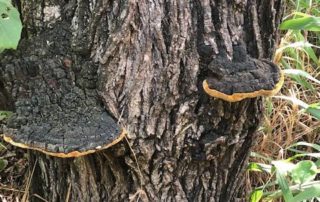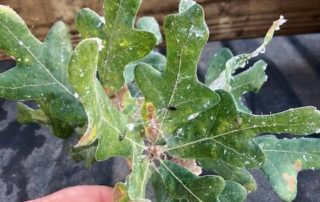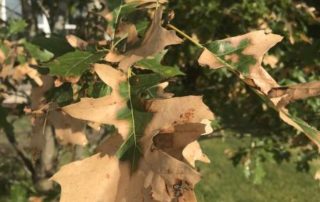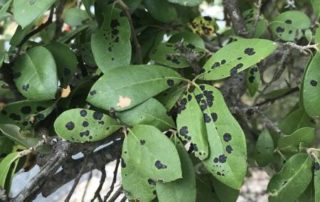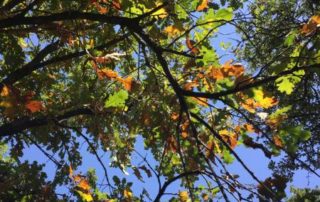Our Tree Care Services Leander, TX
Looking for reliable tree services in and around Leander, Texas? Then look no further than Good Guys Tree Service! We are a professional arborist company with over 20 years industry experience, so if your tree needs a treatment you can trust us to get the job done right!
Services We Provide As Tree Doctors Who Care
- Chlorosis & Other Mineral Deficiencies
- Conks, Cankers, Brackets & Armillaria growths
- Fungal Infections
- Wound Care
- Bacterial Infections
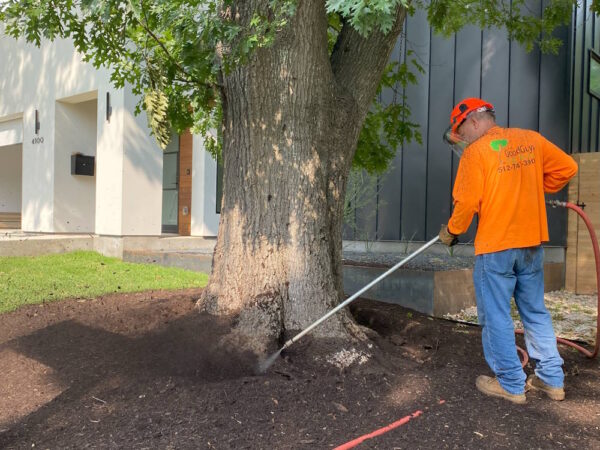
Chlorosis & Tree Mineral Deficiencies Necessary For Tree Care
Trees throughout Leander suffer from mineral deficiencies, which is when the tree is not getting the right nutrients it needs to thrive. The most common type tree mineral deficiency in Texas is chlorosis, which is a lack of iron.
This causes the tree leaves to look anaemic, appearing lighter in tone, even turning yellow in some cases. Other types of deficiencies common in the area are manganese and zinc deficiencies, which cause leaves to look blotched and underdeveloped.
How We Treat This Tree Care Problem
Treating chlorosis and similar mineral deficiencies is easy enough, with a simple injection into the tree providing an added dose of the minerals. These are absorbed quickly into the tree system, ensuring fast results that leave trees looking healthier than ever – results can show in just four weeks!
Good Guys Tree Service provides certified arborist consultations, full treatment programs and complete tree maintenance services. Contact us today to schedule an appointment!
Fungal & Bacterial Infections That Truly Need a Tree Doctor
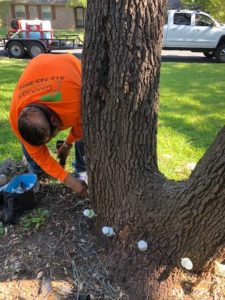 Fungal and bacterial infections are often hard to identify, mainly because there are so many types that can attack trees! Thankfully, our exert arborists know exactly what to look for so can identify the problem quickly and provide suitable solutions.
Fungal and bacterial infections are often hard to identify, mainly because there are so many types that can attack trees! Thankfully, our exert arborists know exactly what to look for so can identify the problem quickly and provide suitable solutions.
Signs of fungal infection on trees include:
- Spotted leaves
- Streaks on leaves
- Moldy leaves
- Warped leaves
- Twigs with dying tips
Signs of bacterial infection on leaves include:
- Blight
- Scorching
- Shriveling
- Burnt tips
How we Treat This Problem
To treat a fungal infection we inject the tree with an appropriate fungicide. This kills off the fungal infection and prevents it spreading to other trees, so it is important to spot the problem quickly to minimize the impact on the tree.
For a bacterial infection, a different approach is used depending on the problem. Common treatments include:
- Cutting and pruning canopies to improve airflow
- Treating with insecticides if the bacteria is caused by an infestation
- Digging into the soil to improve drainage
As with most of our tree services in Leander, we may recommend a special treatment to help encourage healthy recovery!
Tree Growths
Does your tree have an unsightly growth you want rid of? Tree growths like cankers, conks, and brackets are commonplace on many trees in Leander, often causing no problems beyond looking slightly unpleasant.
However, a serious problem may occur if your tree trunk as a growth. This is because there is technically a fungal infection inside the trunk, with the wood now feeding the infection to the point where it eventually kills the tree.
Sadly, there is not treatment for such a problem, as the inside eventually dies off, causing the tree to become unstable and huge safety risk. Removal is the best option in this instance, as only growths on the upper branches off the tree can be treated through pruning.
Tree Wound Care
Trees naturally get damaged over time, with anything from the weather to human interactions causing possible damage like cracks and splits on the branches, or large gashes and wounds across the trunk and bark.
In any case, the damage looks worse than it really is, as trees are incredibly durable and will likely recover on their own. That means we don’t need to do much expect for helping provide ideal conditions for recovery, with some minor maintenance needed at most.
A tree with extensive damage may not health itself entirely, however. There is a possibility of it recovering after getting a treatment from our arborists that is designed to aid with recovery, although in some cases removal may be the only option left.
Insect Infestation
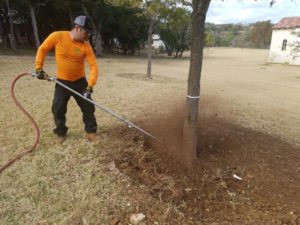 On the leaves: It is perfectly natural for trees in Leader to have some insects on them, yet sometimes these develop into major infestations that harm the tree over time. Possible issues that an insect infestation causes your tree include:
On the leaves: It is perfectly natural for trees in Leader to have some insects on them, yet sometimes these develop into major infestations that harm the tree over time. Possible issues that an insect infestation causes your tree include:
- Loss of foliage – While it is okay for some insects to munch on tree leaves, an infestation may lead to excessive loss of foliage. Anywhere beyond 10-15% of foliage loss is a major issue that requires immediate action.
- Wood burrowing – Wood burrowing insects cause serious damage throughout the tree, forming large holes throughout the tree that cause major structural issues. Bark shavings or small woodpecker indentations are a common sign of wood burrowing insects in trees.
- Root Rot – Insects causing root rot greatly impair root development, which causes all kinds of issues by limiting nutritional distribution throughout roots. Identifying this is hard due to roots being underground, in which case a sample is needed.
How We Treat the Problem
Infestations are treated with an appropriate insecticide, so we will need to identify the type of infestation to ensure the right treatment is used. These are applied via soil drench or injection, with results occurring almost immediately.
Once the infestation is removed, we may suggest some nutritional treatments to encourage healthy regrowth of the damaged area.
Soil Compaction
Soil compaction is a less obvious problem impacting trees around Leander, although the damage it causes is significant if left untreated. Compaction typically occurs due to high foot traffic around the tree, so any activity that sees lots of people and objects move around the base of the tree lead to compaction.
When this occurs, the soil becomes too compact and causes many issues including:
- Weak root systems
- Not enough airflow
- Moisture and nutrients not reaching all roots
- Possible death if left for too long
How We Treat the Problem
Our tree surgeons quickly address soil compaction through a dual action plan. The first step of this involves digging into the soil with a special auguer. This digs holes to the perfect size and width throughout the base of the tree, allowing us to create a better environment for the root system.
Compacted soil is removed, with improved airflow and moisture distribution ensuring roots growth healthier than ever.



